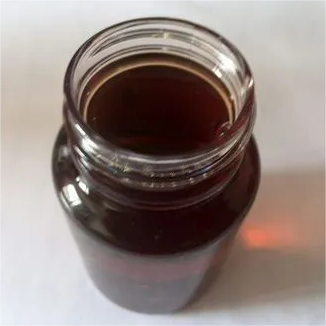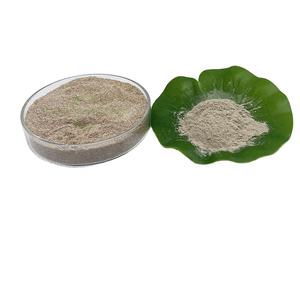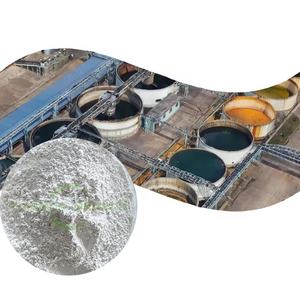1. Introduction
If you’ve ever read the back of a shampoo, toothpaste, or dish soap bottle, you’ve likely seen the words ‘sodium lauryl sulfate’ or ‘SLS.’ This common ingredient is a powerful surfactant—short for ‘surface-active agent’—that helps products lather, clean, and remove grease. But what exactly is sodium lauryl sulfate? And how does it stack up against alternatives like sodium laureth sulfate, cocamidopropyl betaine, or newer bio surfactants? In this guide, we break down everything you need to know about SLS and its surfactant cousins.

2. What Is Sodium Lauryl Sulfate?
Sodium lauryl sulfate (SLS), also known as sodium dodecyl sulfate or natrium lauryl sulfate, is an anionic surfactant derived from lauryl alcohol (often sourced from coconut or palm kernel oil). Chemically, it’s a salt of dodecyl sulfate, with the formula CH₃(CH₂)₁₁OSO₃⁻Na⁺. Its primary function is to reduce surface tension between substances, allowing water to mix with oil and dirt so they can be rinsed away easily.
Because of its strong cleansing and foaming properties, SLS is widely used in shampoos, body washes, toothpastes, laundry detergents, and even industrial cleaners. You might also see it labeled as ‘sls sodium lauryl sulfate,’ ‘na lauryl sulfate,’ or simply ‘lauryl sulfate.’
3. How SLS Works as a Surfactant

The meaning of surfactant lies in its ability to interact with both water and oil. Surfactant molecules have a hydrophilic (water-loving) head and a hydrophobic (oil-loving) tail. When added to water, they gather at the surface, lowering surface tension and enabling better wetting, emulsifying, and foaming.
SLS is a classic example of an anionic surfactant—meaning it carries a negative charge in solution. This contrasts with cationic surfactants (positively charged, like cetyl trimethyl ammonium bromide or CTAB), non-ionic surfactants (no charge, such as polysorbate 80, Span80, or Pluronic 127), and amphoteric surfactants (which can switch charge based on pH, like cocamidopropyl betaine or amidopropyl betaine).
4. Common Uses of SLS Beyond Personal Care
While SLS is famous in shampoos and soaps, it also plays a role in agriculture and industrial applications. For instance, it’s sometimes used as a surfactant for herbicides or as a lawn wetting agent to help weed killers like Roundup spread evenly on waxy plant leaves. In these contexts, SLS acts as a wetting agent for grass, improving absorption of active ingredients.

Other industrial surfactants include sodium dodecylbenzene sulfonate, lignin sulfonate, and ethoxylated alcohols. Some specialized applications even involve fluoro surfactants or copper 1 bromide-based systems, though these are far less common in consumer goods.
5. Safety and Controversy Around SLS
SLS has faced criticism for being a potential skin and eye irritant, especially at high concentrations or with prolonged exposure. However, regulatory bodies like the FDA and EU Cosmetics Regulation deem it safe in rinse-off products at typical usage levels (usually 1–15%).
It’s worth noting that irritation is often confused with toxicity. SLS is not classified as carcinogenic or systemically toxic. Still, many consumers seek gentler alternatives—especially for sensitive skin or baby products.
6. Popular SLS Alternatives and Comparisons
- Sodium laureth sulfate (also called sodium lauryl ether sulfate or sodium lauryl ether sulphate) is a milder, ethoxylated version of SLS. Often labeled as ‘sls sodium laureth sulfate’ or ‘sulfate laureth,’ it produces rich foam with less irritation.
- Cocamidopropyl betaine (also known as coco betaine or coco amido propyl betaine) is an amphoteric surfactant that boosts foam and reduces irritation when blended with anionic surfactants.
- Bio surfactants like decyl glucoside, coco glucoside, and alkyl polyglucoside are derived from renewable resources and are biodegradable, making them eco-friendly choices.
- Other mild anionic options include sodium cocoyl isethionate, sodium lauroyl sarcosinate (or lauroyl sarcosinate), sodium coco sulfate (sometimes called coco sodium sulfate), and sodium cocoyl glutamate.
- Non-ionic surfactants like polysorbate 80, poloxamer 188, and ethoxylated alcohols are often used as emulsifiers rather than primary cleansers.
7. SLS vs. Similar-Sounding Ingredients
Don’t confuse sodium lauryl sulfate (SLS) with sodium laureth sulfate (SLES)—they’re chemically distinct. SLES is created by ethoxylating lauryl alcohol before sulfation, resulting in a larger, less penetrating molecule. Also, ammonium lauryl sulfate (or ammonium dodecyl sulfate) is another anionic surfactant used in shampoos, often for its high foaming power.
Methylated seed oil is sometimes added to herbicide surfactant blends but is not a surfactant itself—it’s a crop oil concentrate that enhances penetration.
8. Where to Buy and Industrial Suppliers
Sodium lauryl sulfate for sale is widely available from chemical suppliers globally. Companies like Rohit Surfactants Private Limited specialize in manufacturing and distributing SLS and related compounds for cosmetics, pharmaceuticals, and agrochemicals. Whether you need lab-grade sodium dodecyl sulfate or bulk SLS for formulation, it’s a commodity chemical with consistent global supply.
9. Environmental and Biodegradability Considerations
SLS is readily biodegradable under aerobic conditions, breaking down within days in wastewater treatment systems. However, its high foaming nature can cause issues in septic systems or aquatic environments if released in large quantities. Bio surfactants like alkyl polyglucoside or sodium oleate offer more sustainable profiles, though they may be costlier or less foamy.
10. Conclusion
Sodium lauryl sulfate remains one of the most effective and economical anionic surfactants available. While it’s not the gentlest option for sensitive skin, its cleaning power ensures its continued use across industries. Understanding the differences between SLS, sodium laureth sulfate, cocamidopropyl betaine, and newer bio-based alternatives empowers consumers and formulators to make informed choices. Whether you’re formulating a shampoo, mixing a weed killer, or just reading a label, knowing your surfactants makes all the difference.
Our Website founded on October 17, 2012, is a high-tech enterprise committed to the research and development, production, processing, sales and technical services of ceramic relative materials such as 10. Our products includes but not limited to Boron Carbide Ceramic Products, Boron Nitride Ceramic Products, Silicon Carbide Ceramic Products, Silicon Nitride Ceramic Products, Zirconium Dioxide Ceramic Products, etc. If you are interested, please feel free to contact us.


